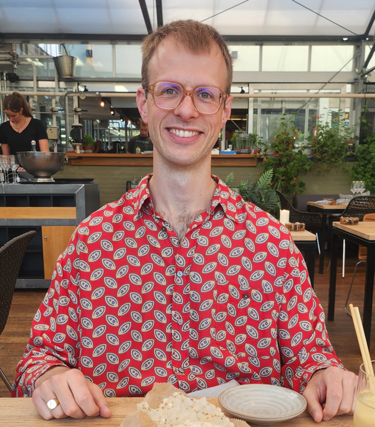Road safety of cyclists in Dutch cities
Teun Uijtdewilligen is a PhD student in the Department Transport Planning. (Co)Promotors are prof.dr.ing. K.T. Geurs and dr.ir. M.B. Ulak from the Faculty of Engineering Technology and dr. G.J. Wijlhuizen from SWOV (Institute for Road Safety Research).
 In many large cities around the world, including large Dutch cities, cycling volumes are increasing. At the same time, these cities are experiencing a growing number of cyclists being involved in serious road traffic crashes. Therefore, this thesis aims to contribute to the understanding of how increasing cycling volumes in urban areas affect objective and subjective safety of cyclists. To investigate this, it is examined how cycling volumes and motorised vehicle volumes in the four largest Dutch cities (i.e. Amsterdam, Utrecht, Rotterdam, and The Hague) contribute to the number of serious injury and fatal crashes and the perceived safety of cyclists. In addition, cycling infrastructure types, speed limits, network structure, and the built environment are considered as well.
In many large cities around the world, including large Dutch cities, cycling volumes are increasing. At the same time, these cities are experiencing a growing number of cyclists being involved in serious road traffic crashes. Therefore, this thesis aims to contribute to the understanding of how increasing cycling volumes in urban areas affect objective and subjective safety of cyclists. To investigate this, it is examined how cycling volumes and motorised vehicle volumes in the four largest Dutch cities (i.e. Amsterdam, Utrecht, Rotterdam, and The Hague) contribute to the number of serious injury and fatal crashes and the perceived safety of cyclists. In addition, cycling infrastructure types, speed limits, network structure, and the built environment are considered as well.
In this thesis, objective safety is captured by examining the number of fatal and serious injury bicycle crashes (i.e. crash frequency) and the probability of a bicycle crash occurring (i.e. crash risk) related to the exposure to cyclists and motorised vehicles (i.e. the number of cyclists or vehicles per unit road length). Since the level of exposure varies substantially between the hours of the day, hourly exposure metrics are used. Subjective safety is captured by examining the impact of crowding among cyclists on cyclists’ perceived safety.
The results show that with increasing exposure to cyclists, both the number of bicycle crashes and the crash risk of cyclists increases. The same effect is found for increasing exposure to motorised vehicles. Moreover, while separated bicycle tracks are found to be the safest cycling infrastructure type in terms of objective safety, they are perceived as least safe when crowding among cyclists is high. Crowding, in general, negatively affects perceived safety of cyclists, in particular for older cyclists and women. It is also found that subjective and objective safety are correlated and that this relationship is affected by exposure to cyclists and motorised vehicles.
Since it is expected that cycling volumes in large cities keep increasing, it is important to invest in cycling infrastructure that is capable of safely facilitating large flows of cyclists and that separates cyclists from motorised vehicles.





